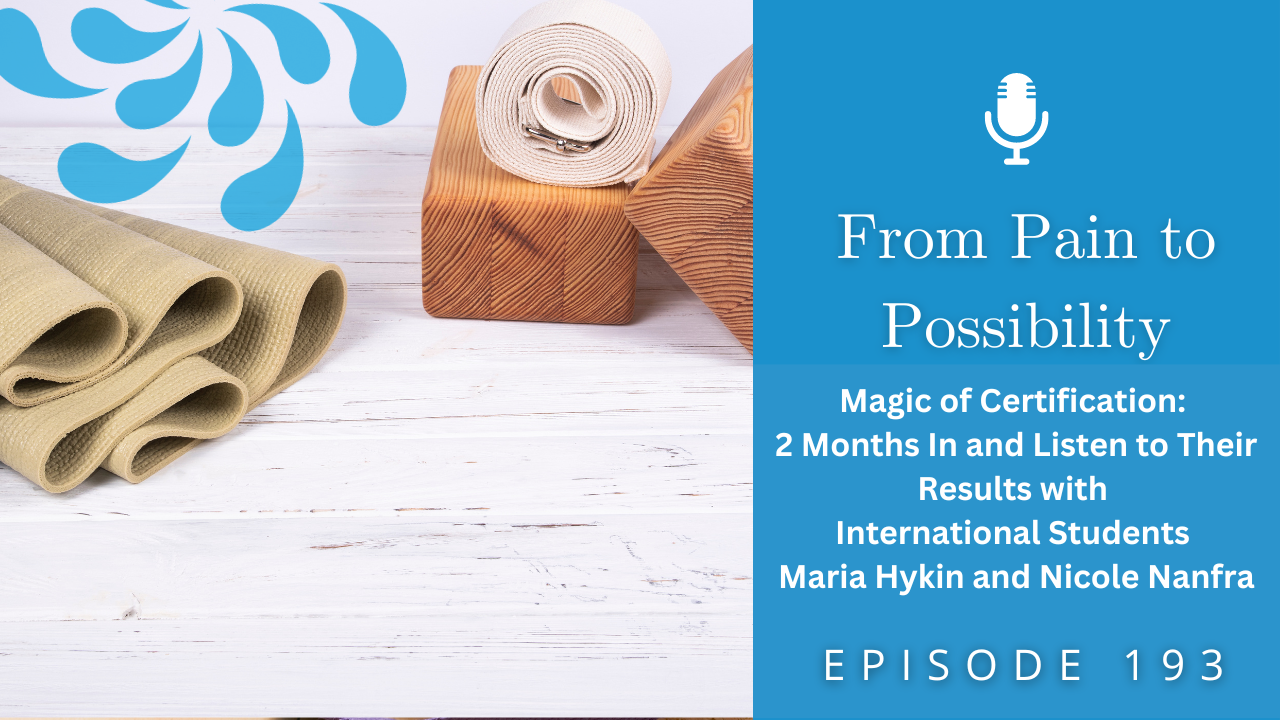My Therapeutic Yoga Intensive and Therapeutic Yoga Certification programs are extensive and challenging, but we also have fun, build community, and support one another. To give you further insight into them, this week I'm pleased to share a conversation with some really special guests, two of my current trainees: Maria Hykin and Nicole Nanfra.
It's one thing to talk with people when they've gotten their groove or graduated, but it's a totally different game when we're two months in. So Nicole and Maria are here to share more about what it's like being two months into the final module, how they're expanding their practices, and how the program is benefitting their clients.
Discover why they chose the certification program, how I support my trainees within it, and how the training has exceeded their expectations. We dive deeper into how we celebrate success, overcome fears, and embrace the training, as well as how we create gains in our lives and the lives of our clients.
The Therapeutic Yoga Intensive is running from October 28 - November 2, 2023 and is currently open for registration. Learn more about it and sign up by clicking here.
Subscribe: Apple Podcasts | Spotify

